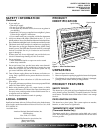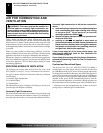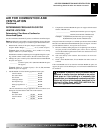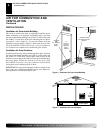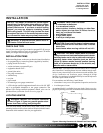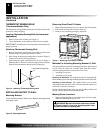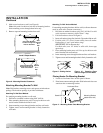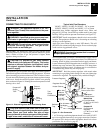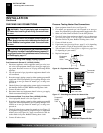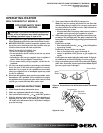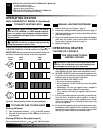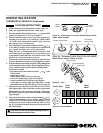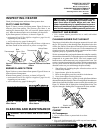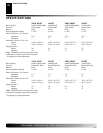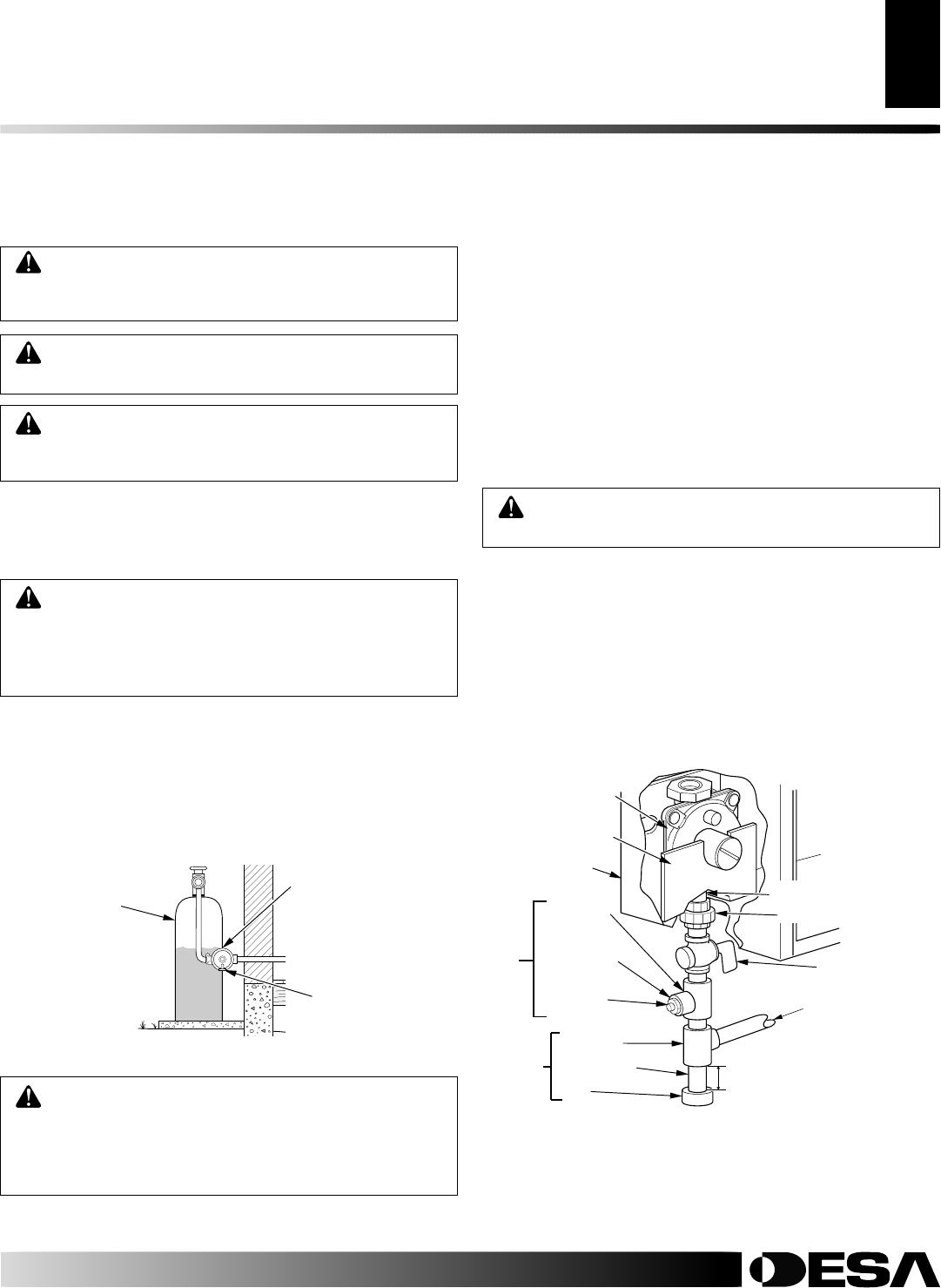
107887
For more information, visit www.desatech.com
For more information, visit www.desatech.com
11
11
INSTALLATION
Continued
INSTALLATION
Connecting To Gas Supply
For propane/LP gas, the installer must supply an external regulator.
The external regulator will reduce incoming gas pressure. You must
reduce incoming gas pressure to between 11 and 14 inches of water.
If you do not reduce incoming gas pressure, heater regulator damage
could occur. Install the external regulator with the vent pointing
down as shown in Figure 14. Pointing the vent down protects it from
freezing rain or sleet.
WARNING: A qualified service person must con-
nect heater to gas supply. Follow all local codes.
CAUTION: For propane/LP gas, never connect
heater directly to the propane/LP supply. This heater
requires an external regulator (not supplied). Install
the external regulator between the heater and pro-
pane/LP supply.
Typical Inlet Pipe Diameters
VN18(T), VP16(T), VN18IT, and VP16IT - 3/8" or greater
VN30(T), VP26(T), VN25IT, and VP22IT - 1/2" or greater
Installation must include equipment shutoff valve, union, and
plugged 1/8" NPT tap. Locate NPT tap within reach for test gauge
hook up. NPT tap must be upstream from heater (see Figure 15).
IMPORTANT:
Install an equipment shutoff valve in an accessible
location. The equipment shutoff valve is for turning on or shutting
off the gas to the appliance.
Apply pipe joint sealant lightly to male NPT threads. This will
prevent excess sealant from going into pipe. Excess sealant in pipe
could result in clogged heater valves.
CAUTION: Use only new, black iron or steel pipe.
Internally-tinned copper tubing may be used in certain
areas. Check your local codes. Use pipe of large
enough diameter to allow proper gas volume to heater.
If pipe is too small, undue loss of volume will occur.
We recommend that you install a sediment trap in supply line as
shown in Figure 15. Locate sediment trap where it is within reach for
cleaning. Install in piping system between fuel supply and heater.
Locate sediment trap where trapped matter is not likely to freeze. A
sediment trap traps moisture and contaminants. This keeps them
from going into heater controls. If sediment trap is not installed or
is installed wrong, heater may not run properly.
IMPORTANT:
Hold the pressure regulator with wrench when
connecting it to gas piping and/or fittings. Do not over tighten pipe
connection to regulator. The regulator body could be damaged.
WARNING: Use pipe joint sealant that is resistant
to liquid petroleum (LP) gas.
WARNING: This appliance requires a 3/8" NPT
(National Pipe Thread) inlet connection to the pres-
sure regulator.
IMPORTANT
: For natural gas, check gas line pressure before
connecting heater to gas line. Gas line pressure must be no greater
than 14 inches of water. If gas line pressure is higher, heater
regulator damage could occur.
WARNING: For natural gas, never connect heater
to private (non-utility) gas wells. This gas is com-
monly known as wellhead gas.
CONNECTING TO GAS SUPPLY
Figure 14 - External Regulator With Vent Pointing Down
External
Regulator
Propane/LP
Supply
Tank
Vent
Pointing
Down
* A CSA design-certified equipment shutoff valve with 1/8" NPT
tap is an acceptable alternative to test gauge connection. Purchase
the optional CSA design-certified equipment shutoff valve from
your dealer. See Accessories, page 30.
Figure 15 - Gas Connection
Pressure Regulator
Tee Joint
Reducer
Bushing to
1/8" NPT
1/8" NPT
Plug Tap
Test
Gauge
Connection*
Tee Joint
Pipe Nipple
Cap
Heater Cabinet
Sediment
Trap
Equipment
Shutoff Valve *
3"
Minimum
Natural Gas
From Gas Meter
(7" W.C. to 10.5" W.C.
Pressure)
Propane/LP
From External
Regulator
(11" W.C. to 14" W.C.
Pressure)
Regulator Bracket
3/8" NPT Pipe Nipple
Ground Joint Union



